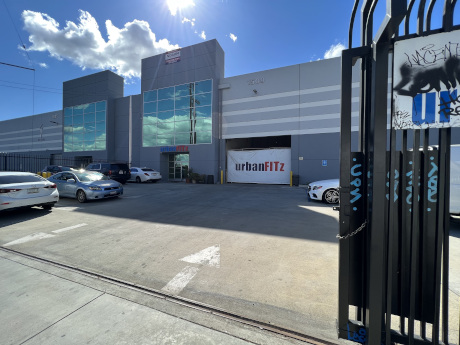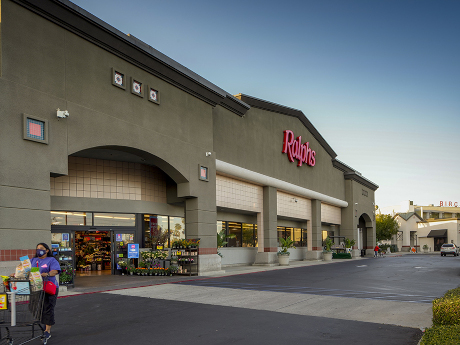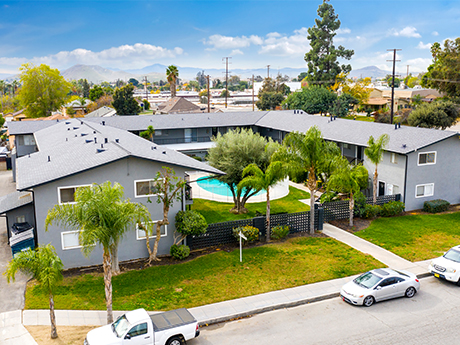By Kimberly Stepp, Principal, Stepp Commercial The strength of the Greater Los Angeles apartment market has exceeded expectations coming out of the pandemic. Despite reports of an exodus from California and population decline in the metro, apartment rental demand is seeing an all-time high, with net absorption of units running at its highest level in decades. As a result, vacancy is at a low 3.4 percent, lower than the pre-COVID level of 4.4 percent. Asking rents have seen a 7.7 percent growth over the past 12 months, while the national rate is 11.1 percent. Average monthly asking rents across LA County stand at $2,130, albeit still lower than the median monthly home payment of $2,659. Los Angeles multifamily market fundamentals remain favorable for investors. The area has one of the highest percentages of renters of any U.S. metro, comprising approximately half of all households. Already hefty housing prices in a highly competitive market have seen even greater increases over the past 20 months, resulting in a median home price of $795,000. This has left a significant part of the population priced out of homeownership. High construction costs, NIMBY sentiment and onerous permitting continue to plague the ability to deliver desperately needed housing units. …
Market Reports
By Elizabeth Capati, Associate, Colliers Greater Los Angeles A new trend has emerged across Greater Los Angeles’ industrial market that has developers waiting for under-construction projects to capture the highest possible rent near the final development stages or closer to their target completion dates. With rents increasing at historical rates, a certain hesitancy exists, and companies are less likely to sign a lease during earlier development stages. In some instances, landlords ask listing agents to place certain buildings or projects on the market months in advance to build momentum and pique interest. Still, those landlords elect not to review offers until a month or two before their target completion date. Los Angeles is a land-constrained market where all new developments come from knocking down older, functionally obsolete buildings or conversions from other property types. The more contemporary, state-of-the-art facilities with the tallest warehouses and functional loading set the high water mark for new lease rates. With a 0.6 percent vacancy across an 862-million-square-foot market, tenants will continue to aggressively bid for any new big box space that comes to market. The South Bay and San Gabriel Valley markets are the only areas with more than 1 million square feet of development activity. Activity and Incentives …
By Glenn R. Rudy, Senior Managing Director, Retail Capital Markets, Newmark We all know the commercial real estate industry is cyclical and there are casualties in every cycle across asset classes. However, retail seems to always be in everyone’s crosshairs. It quite frequently is the tail wagging the dog across institutional investors. Consider this, though: if there is one thing the pandemic has proven (once again), it is that the retail sector as a whole is one of the most resilient in the industry. Nowhere in the country is this statement more evident than here in Orange County. While investment sales activity was sluggish overall in 2021, picking up largely in the fourth quarter, retail leasing activity was record breaking. Annual net absorption turned positive after nine consecutive quarters of losses. Vacancy rates have not yet returned to pre-pandemic levels, but rent growth has reach a new all-time high as of year-end 2021. Tenants and landlords were both motivated to sign leases in 2021 to satisfy the increased market demand from consumers yearning to get out and be social again. Society wanted to spend its money on soft goods, dining out and enjoying the retail experience that was so sorely missed in 2020. On the investment …
By Bob Caudill, Executive Vice President, Colliers We continue to see a flight by tenants into low-rise office properties, typically four stories or less, and out of high rises. This trend began pre-pandemic, but COVID has undoubtedly accelerated its movement. Asking rates in the market have flattened, while concessions like free rent, beneficial occupancy and improvement allowances have increased. The surge in construction costs continues, putting stress on the economics of lease deals. In addition, construction material delivery delays have impacted the completion of tenant improvements. We will continue to see challenging times for office owners in the short-term as tenants are unsure how much space they need going forward. More tenants will also struggle to pay rent on time. In the long-term, although some industries have learned that they can remain successful with most of their employees working remotely, others are experiencing negative impacts on creativity and collaboration. As a result, their businesses have suffered financially, and they will require their employees to return to the office. Activity and Impact The Irvine Company’s Spectrum Terrace has set a new standard in design and quality for low-rise, Class A office properties. Tenants in this project are creating a workplace environment that employees will want …
By Terrison Quinn, Managing Principal, SRS Real Estate Partners Despite the headwinds facing the Orange County retail property sector in 2021, retailers experienced record sales, while shopping center owners realized all-time-high property values. Orange County’s retail vacancy rate also decreased in 2021 from 4.58 percent to 4.32 percent as compared to 2020, according to CoStar. Meanwhile, rents increased from $33.12 per square foot, per year to $34.55 per square foot, per year — back to pre-pandemic levels. There are many reasons for these impressive numbers, though less stringent COVID rules and the solid job market may be two key drivers. Orange County remained less restrictive on businesses than neighboring Los Angeles County. The county also seems to have been the economic benefactor given the less severe climb out of the vacancy and unemployment challenges that were experienced through the pandemic. Orange County’s job market was hit hard during the pandemic with its large employment base in hospitality and leisure. However, it bounced back quickly with Disneyland re-opening and others hiring thousands of workers amongst robust consumer demand. Orange County’s job market is also recognized as one of the more diverse and higher paying counties in Southern California. Investors Continue to Eye Orange County as the Gold Standard …
By Garrett McClelland, Vice President, JLL With a global pandemic still in flux, strong demand for Orange County industrial remained constant throughout 2021. As we start the New Year, signs of a slowdown are nowhere in sight. Orange County’s overall vacancy was at 2 percent last quarter, which ranks among the lowest nationally. Demand continues to outpace supply — with limited inventory bringing the vacancy rate down and driving rents to historic highs. With very few viable options, tenants are forced to settle for anything that will satisfy their needs, or renew. Given this, developers have gotten creative to find solutions and build new industrial product in primary submarkets. The primary target for industrial developers in Orange County has been Class B and C office buildings located on industrial-zoned parcels. For example, Duke Realty recently bought a primarily vacant 100,000-plus-square-foot office building in Brea. The building is situated on 5.8 acres and is planned for a new modern warehouse industrial facility. According to JLL Research, out of the 12 conversion projects announced last year, nine were office to industrial. This shouldn’t come as a surprise as we’ve seen rapid rent growth in the industrial sector over the past 24 months. This has made office-to-industrial …
By Mark McAdams, Vice President, JLL While the Inland Empire is more well-known for its industrial real estate, the region’s office market has continued with its own success and stability pre- and post-COVID. As employees of office buildings seek refuge from high home prices in neighboring Los Angeles and Orange counties, occupiers equally appreciate the accommodating office rental rates while supporting their employee’s draw to the region. The current office market is in nearly the same place it was at the end of the first quarter of 2020 when COVID appeared on the scene. The overall market vacancy rate stands at 7.8 percent. Some of the submarkets have lower vacancies today than in the first quarter of 2020. Some smaller submarkets have seen even lower vacancy rates down to unprecedented levels at 3 percent to 5 percent. Only one submarket, San Bernardino, has a double-digit vacancy rate at 12.6 percent, and that is still considered healthy. Anything sub-10 percent is generally considered a landlord’s market. These are historically low vacancy rates that have rarely been seen since the area started developing the bulk of its office inventory in the mid-1980s. The pandemic put a hold on rental rate increases that had …
Orange County’s Multifamily Market Stays Strong as New Inventory May Curb the Supply-Demand Imbalance
by Jeff Shaw
By Peter Hauser, Principal, Avison Young The Orange County multifamily sector is extremely strong. Rents continue on a positive upward trend and occupancies remain very high, hovering around 97 percent. It is unquestionably a landlord’s market. Many years of supply constrained NIMBY-ism that created the lack of new construction is coming to an end, however. The California governor has mandated that cities approve quality residential developments with the goal of increasing density and combatting the significant housing shortage. There are currently 6,800 new multifamily units in the process of being delivered. While there are projects in the majority of cities, Irvine, Anaheim, Orange and Santa Ana are seeing the most development activity. Some very active Orange County developers include Trammel Crow Residential, Alliance, the Irvine Company, Western National Group, JPI, Wermers Companies, Avalon, Fairfield, Shopoff Realty and Garden Communities. Alliance Residential is nearly complete on its 1,221-unit Park & Paseo in Santa Ana, near the border of the master-planned Tustin Legacy community. Wermers Companies is also in the process of finishing the 603-unit Elan, located less than a mile from downtown Santa Ana near the intersection of the 55 and 5 freeways. The 653-unit Avalon Brea Place is starting to …
Institutional Money, Private Investors Continue to Flock to Inland Empire Multifamily Market
by Jeff Shaw
By Eric Chen, Senior Vice President, CBRE Multifamily has been a well-performing real estate segment during the past 18 months as demand for housing continues to trump supply in most of California. The Inland Empire has been the recipient of much of this demand within the Greater Los Angeles and Southern California regions due to their economic and population growth. Tenants are also in search of more affordable, quality dwellings outside the urban core. Due to the confluence of these factors, multifamily vacancies in the area are at an all-time low of less than 5 percent. This is exasperated by the fact that new developments are at the lowest level across the nation, pushing rent growth to No. 1. This dynamic is, of course, ideal for investors who seek stable, income-producing investments with potential upside and little risk of oversupply. We do expect additional apartment properties to be built in the coming year or two, which will create more investment opportunities and provide more options for tenants who are new to the region or relocating from within. Looking back on this year, we have seen a number of large institutional-sized transactions between $25 million and $100 million, with investors ranging …
By Tony Phu, Senior Executive Vice President, Colliers Rental rates and land values continue to outpace construction cost inflation, driven by the insatiable need for industrial and distribution space across the entire Western U.S. This is especially true in Southern California where a critical mass of population/tenant demand and high barriers to entry for development have created an exacerbated supply and demand imbalance. Scarcities of land for new development, as well as existing and under-construction buildings, are the main drivers. Entitlements are difficult to secure with a timeline between 24 and 30 months from start to finish. As a result, scarcity will remain the name of the game, and tenants will continue to pay increased costs to secure a building. With roughly 29 million square feet expected to deliver over the next five quarters, vacancy should remain flat as demand stays high for these buildings. Lease rates will continue to rise as existing tenants renew while expanding tenants compete for limited space that comes to market. Total net absorption for 2021 will break the record set in 2018, likely falling just shy of 30 million square feet. Activity levels in both the Inland Empire East and West remain about the same. There are so …











